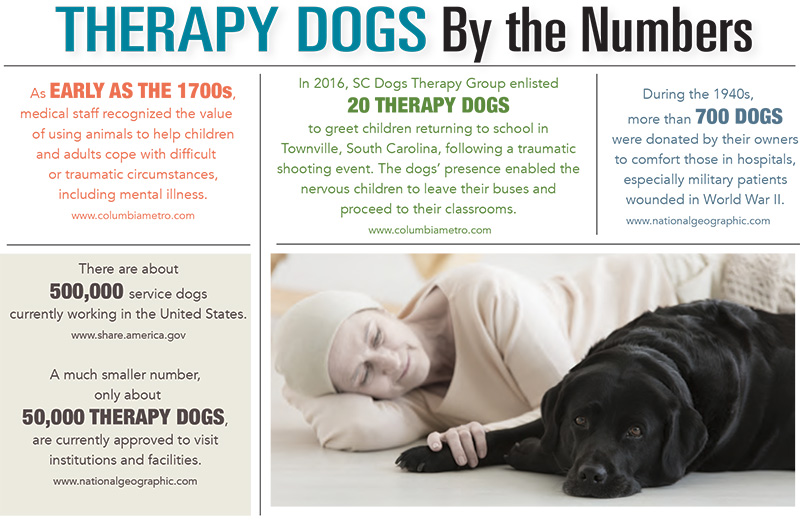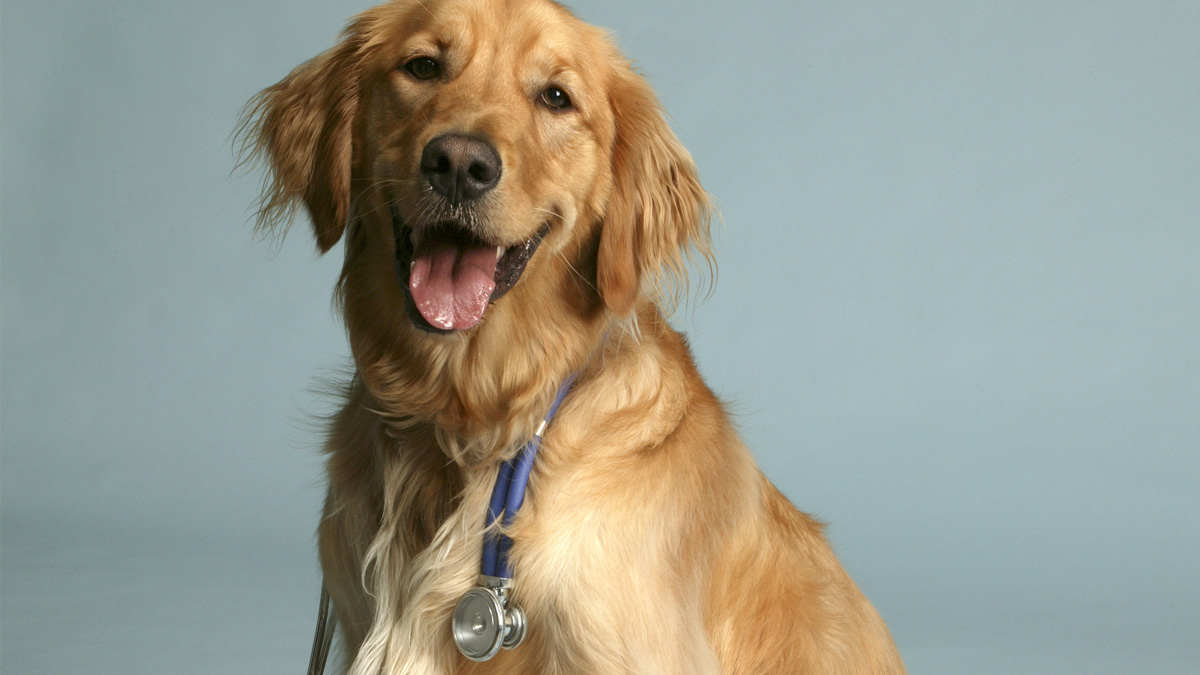Here they come, sauntering down the hallway of a hospital, a mental-health facility, a nursing home, a cancer ward, a detention center or just about any place where the lonely, bored, frightened or suffering are found. Therapy dogs arrive in all shapes, sizes and breeds, from Great Danes to Yorkshire terriers. They may have a fine pedigree or be a nondescript shelter dog, but they share two special qualities: a calm, gentle demeanor and generous, unconditional love for everyone they meet. Wolf and coyote hybrids need not apply.
For a few brief moments, life’s stress, pain and sadness must yield ground to a friendly wagging tail, kindly eyes and silky fur. That magic moment when joy lights up a frightened or pained face is truly priceless. Kayla Bost, the activities director at Greenville Place Assisted Living & Memory Care, described such a visit as, “bringing pure joy to our entire building. Staff, residents, visitors and volunteers are always happy to see a therapy dog arriving. Just holding or petting a calm, gentle dog can comfort and brighten any day.”
Traci Knies, the director of support operations at Trident Medical Center in Charleston, agreed: “For many patients, a dog’s visit allows them to forget, even momentarily, that they are sick. They can be human, show love and experience the love of an animal instead of the robotic feeling that comes with daily routines of hospital stays.”
Therapy dogs differ from service dogs in that their training is less rigorous, they are not prepared for a specific person or need and they are not given free access to travel everywhere. Basically, they must be friendly and polite, responsive to a few basic commands and obedient on a leash. In fact, on-duty therapy dogs are never off-leash. Handler and dog always work together as a team.
Additionally, these dogs must be calm and not easily frightened or upset. After all, a day’s visit might include some ear tugging by a restless toddler or the jarring clank of medical equipment. A dementia patient might hug a little too tightly, or someone might be loud in the hallway.
Before approving visits, most facilities require that dog and handler be team-certified through one of the national therapy-dog registries. Kelsey Gilmore-Futeral of Mount Pleasant sits on the board and functions as secretary for the Alliance of Therapy Dogs. Currently, 730 South Carolina teams are registered with her organization. In addition to the basic training and temperament requirements, she adds that dogs must be able to tolerate full-body touch and cannot be aggressive toward other dogs. Observational testing is done in medical settings to check for adaptability. The only fee in the process covers the mandatory background check.
For handlers, knowing they are positively impacting someone’s life is powerful and addicting. They all have stories that grab your heart. Trident Medical Center’s pet therapist, Sharon Field, has allowed the blind to use touch to explore her patient little dog’s head, fur and tiny body. She has also permitted grieving families to clutch her schnoodle tightly and stroke her repeatedly as they sob out their pain. The comfort provided is so real that some therapy dogs are even requested to follow up at funerals.
Sherry Anderson, president of Paws2Care, is partial to vizslas and has trained several as visitation dogs. That anticipation and joy of witnessing precious animal/human connections keeps her volunteering. Caroline Hunt of Southeastern Therapy Animal Resources concurs. Her list of volunteers includes doctors, teachers, professors, artists, veterinarians and attorneys.
“Feeling that you have made a difference is the most rewarding part of volunteering,” she reported.
The value of the therapy dog is becoming more recognized and opportunities for service continue to expand, but, unfortunately, there are never enough teams to cover the requests.
For more information on therapy dogs, visit www.therapydogs.com. To volunteer, visit www.paws2care.net in the Upstate and www.startherapydogs.org in the Lowcountry.
By Janet E. Perrigo

